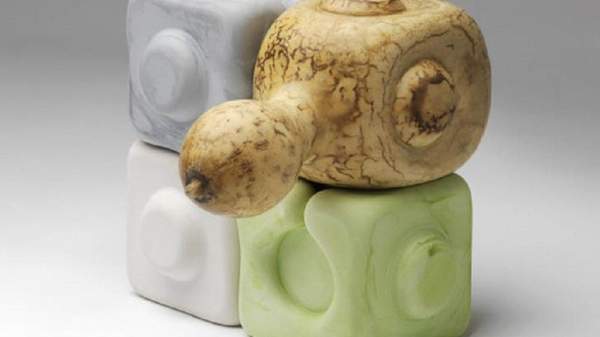Overview
A cucumber is more or less responsible for Andrew Mowbray's obsession with the gourd. Wandering around his garden one fateful morning, he made a rather unusual discovery. Between his fence and a tree, a cucumber was growing, but as a result of being squashed on both sides, it looked more like a hard, green pancake - 'pressed flat with rounded edges and completely trapped'.
Finding the form 'formally interesting' and 'architecturally amazing', he started thinking about how he might be able to re-create it in a manner that would not be threatened by decomposition. Research led him to the Lagenaria gourd, which won't come as a surprise to those acquainted with the robust plant.
When people initially came up with the idea of cultivating plants, the Lagenaria gourd was one of the first with which they experimented. Once dried, it becomes as tough as wood, making for a trusty container, bottle, ladle or birdhouse. The West Africans were the first to transform it into an instrument, and the concept soon spread through Asia, the Americas, the Caribbean and the Pacific Islands. The gourd is one of the few plants that we grow for aesthetic and practical purposes, rather than to feed ourselves.
Now, Mowbray is taking its functionality to new heights, by transforming the gourd into a building block. He grows each one in an acrylic container, which is cubic, with semi-circular depressions enabling the development of 'nubs or buttons'. A modular unit' can be created by locking several of them together. At the same time, he is exploring the sculptural potential of the gourd's form, through emulation with plaster, cement and other materials.
[VIA Inhabitat]
